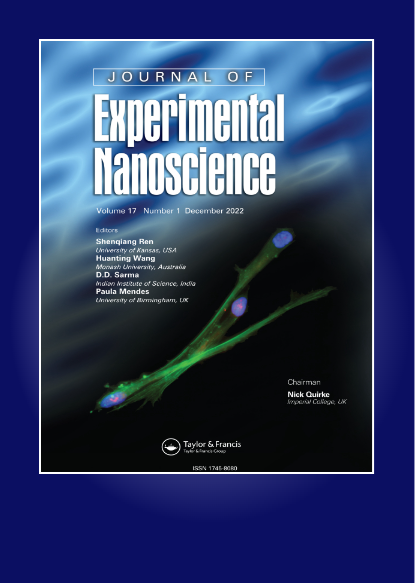Targeting pituitary adenomas with folate-conjugated multiple drug decorated liposomal formulations for improved antiproliferative anticancer efficacy
IF 2.8
4区 材料科学
Q2 CHEMISTRY, MULTIDISCIPLINARY
引用次数: 0
Abstract
Abstract In this work, we synthesized folate-conjugated dual-drug loaded double liposomes which are noted for their extremely high target specificity towards pituitary adenomas. It is known that while folate receptors are almost non-existent in normal tissues, they are overexpressed in non-functional pituitary adenomas. Synthesis, characterization and in vitro studies of folate-conjugated dual-drug loaded double liposomes for targeting non-functional pituitary adenomas is the highlight of this study. The size, zeta-potential, polydispersity index, in vitro release studies, stability of the nanoformulation, cytotoxicity and cellular uptake studies have been carried out. It was noted from the results that these are highly targeted liposomal formulation as expressed by the cellular uptake studies and are just sufficiently sized to escape the clearance mechanisms of body. They were also cytocompatible and were stable even after 60 days of shelf life with negligible changes in sizes, zeta potential as well as polydispersity index. The conjugation with folate particles resulted in the high specificity of the formulation to the specific targeted tissue as seen in cellular uptake by primary cell culture of non-functional pituitary adenomas. It may safely be concluded from the results that this approach may be a promising therapy for the future which has low cytotoxicity and high-specificity.靶向垂体腺瘤的叶酸缀合多种药物修饰脂质体制剂,以提高抗增殖抗癌功效
在这项工作中,我们合成了叶酸偶联的双药负载双脂质体,该脂质体对垂体腺瘤具有极高的靶向特异性。众所周知,虽然叶酸受体在正常组织中几乎不存在,但它们在无功能垂体腺瘤中过度表达。针对无功能垂体腺瘤的叶酸偶联双药双脂质体的合成、表征和体外研究是本研究的重点。进行了大小、ζ电位、多分散指数、体外释放研究、纳米制剂稳定性、细胞毒性和细胞摄取研究。结果表明,细胞摄取研究表明,这些是高度靶向的脂质体制剂,其大小正好可以逃脱身体的清除机制。它们还具有细胞相容性,即使在60天的保质期后也很稳定,大小、zeta电位和多分散性指数的变化可以忽略不计。与叶酸颗粒的结合导致该制剂对特定目标组织的高特异性,这在无功能垂体腺瘤的原代细胞培养的细胞摄取中可见。结果表明,该方法具有低细胞毒性和高特异性,是一种很有前途的治疗方法。
本文章由计算机程序翻译,如有差异,请以英文原文为准。
求助全文
约1分钟内获得全文
求助全文
来源期刊

Journal of Experimental Nanoscience
工程技术-材料科学:综合
CiteScore
4.10
自引率
25.00%
发文量
39
审稿时长
6.5 months
期刊介绍:
Journal of Experimental Nanoscience, an international and multidisciplinary journal, provides a showcase for advances in the experimental sciences underlying nanotechnology and nanomaterials.
The journal exists to bring together the most significant papers making original contributions to nanoscience in a range of fields including biology and biochemistry, physics, chemistry, chemical, electrical and mechanical engineering, materials, pharmaceuticals and medicine. The aim is to provide a forum in which cross fertilization between application areas, methodologies, disciplines, as well as academic and industrial researchers can take place and new developments can be encouraged.
 求助内容:
求助内容: 应助结果提醒方式:
应助结果提醒方式:


